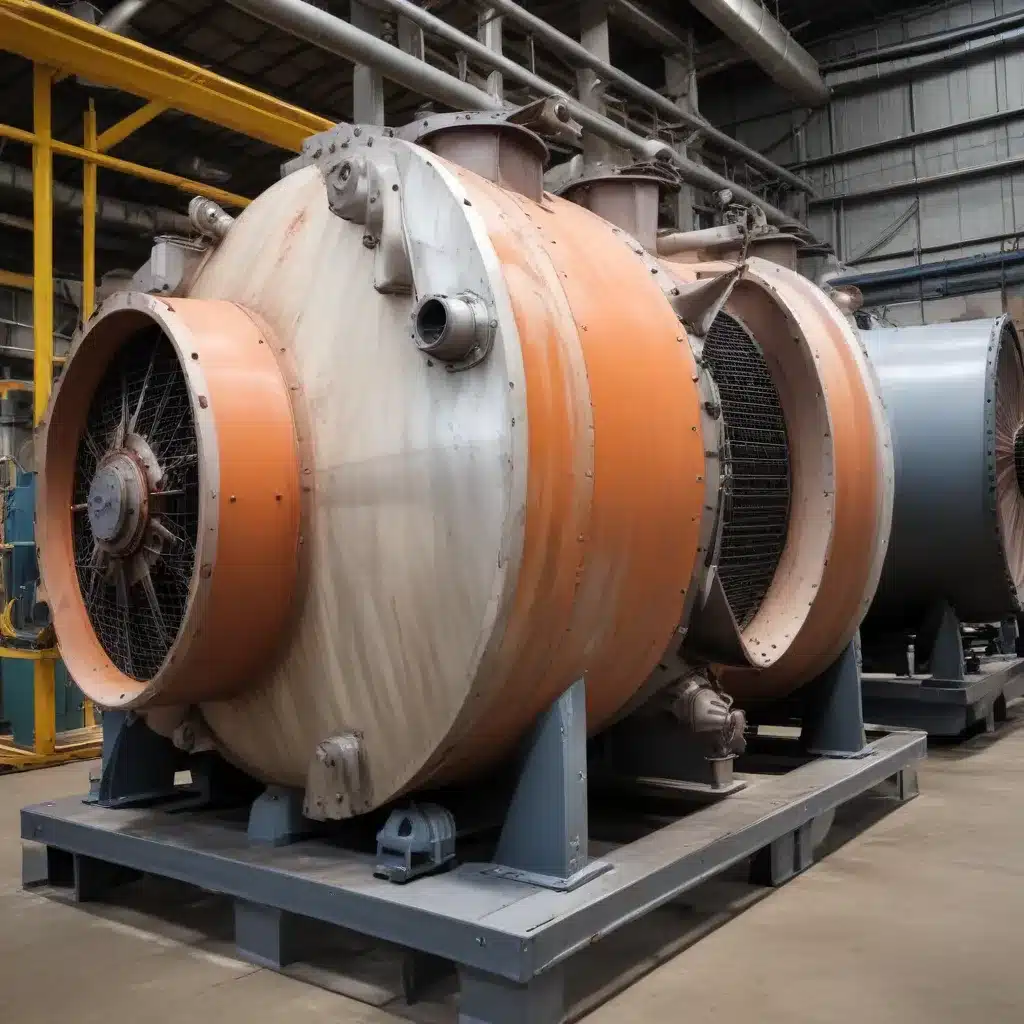
Understanding the Causes of Vibration in Air-Cooled Heat Exchangers
Air-cooled heat exchangers are essential pieces of equipment found in various industrial settings, from power plants and refineries to HVAC systems and manufacturing facilities. While these units are designed to provide efficient heat transfer, they can sometimes experience troublesome vibration issues that can lead to a range of problems, including decreased performance, excessive noise, and even equipment damage.
Identifying the root causes of vibration in air-cooled heat exchangers is crucial for implementing effective solutions. Some of the most common causes of vibration in these systems include:
Mechanical Imbalance
One of the primary causes of vibration is mechanical imbalance, which can occur due to various factors, such as:
- Damaged or worn rotating components: Bent or damaged fan blades, shafts, or sheaves can create an uneven distribution of weight, leading to vibration.
- Improper assembly: Loose or misaligned components, such as bearings or drive belts, can contribute to vibration issues.
- Wear and tear: Over time, components can become worn or damaged, causing imbalance and increased vibration.
Aerodynamic Factors
The design and operation of the air-cooled heat exchanger’s fans can also contribute to vibration problems. Factors such as:
- Inadequate airflow: Restricted or uneven airflow across the heat exchanger can create fluctuations in air pressure, leading to vibration.
- Resonance conditions: If the fan’s operating speed coincides with the natural frequency of the system, it can amplify vibrations.
- Turbulent airflow: Obstructions or irregularities in the airflow path can cause turbulence, resulting in increased vibration.
Structural Considerations
The structural integrity of the air-cooled heat exchanger itself can also play a role in vibration issues. Factors such as:
- Inadequate bracing or support: Insufficient structural support for the heat exchanger can allow excessive movement and vibration.
- Resonance with external structures: If the heat exchanger’s natural frequency matches that of the surrounding structures, it can create resonance and amplify vibrations.
- Thermal expansion: Changes in temperature can cause the heat exchanger’s components to expand and contract, leading to increased stress and vibration.
Diagnosing and Addressing Vibration Issues
To effectively troubleshoot and resolve vibration problems in air-cooled heat exchangers, it’s essential to take a systematic approach. This typically involves the following steps:
1. Vibration Measurement and Analysis
The first step in addressing vibration issues is to accurately measure and analyze the vibration characteristics of the air-cooled heat exchanger. This can be done using specialized vibration monitoring equipment, such as accelerometers or displacement sensors, placed at strategic locations on the unit.
By analyzing the vibration data, you can identify the dominant frequencies and amplitudes, which can provide valuable insights into the root causes of the problem. For example, high-frequency vibrations may indicate mechanical imbalance, while lower-frequency vibrations could point to structural or aerodynamic issues.
2. Visual Inspection and Component Evaluation
Alongside vibration analysis, a thorough visual inspection of the air-cooled heat exchanger can also help identify potential sources of vibration. Look for any signs of damage, wear, or misalignment in the rotating components, such as fan blades, shafts, and bearings. Check the integrity of the structural supports, bracing, and connections, and inspect for any obstructions or irregularities in the airflow path.
3. Corrective Measures and Preventive Maintenance
Once the root causes of the vibration issues have been identified, it’s time to implement corrective measures. Depending on the specific problem, this may involve:
- Replacing or balancing damaged or worn rotating components
- Adjusting or tightening loose connections and supports
- Addressing airflow obstructions or improving the airflow path
- Implementing vibration-damping mechanisms, such as isolators or dampers
- Reviewing and optimizing the fan’s operating speed to avoid resonance conditions
Additionally, implementing a robust preventive maintenance program can help mitigate future vibration issues. This may include regularly scheduled inspections, component replacements, and vibration monitoring to identify and address problems before they escalate.
Strategies for Optimizing Air-Cooled Heat Exchanger Performance
Beyond addressing vibration problems, there are several strategies that can be employed to optimize the overall performance of air-cooled heat exchangers:
Fin Design and Material Selection
The design and material choice of the heat exchanger’s fins can have a significant impact on its performance. Considerations such as fin type (e.g., flat, wavy, louvered), fin density, and material properties (e.g., thermal conductivity, corrosion resistance) can all affect heat transfer efficiency and susceptibility to fouling.
Airflow Optimization
Ensuring optimal airflow across the heat exchanger is crucial for maximizing heat transfer and minimizing pressure drop. This may involve the use of inlet bells, fan speed adjustments, or the implementation of air-flow management devices, such as baffles or flow straighteners.
Fouling Prevention and Mitigation
Fouling, the accumulation of unwanted deposits on the heat exchanger’s surfaces, can significantly degrade its performance over time. Strategies for mitigating fouling include regular cleaning, the use of specialized coatings or materials, and the implementation of water treatment systems for evaporative cooling applications.
Intelligent Monitoring and Control
Incorporating advanced monitoring and control systems can help optimize the performance of air-cooled heat exchangers. This may include the use of sensors to track key parameters, such as vibration, temperature, and pressure, as well as the integration of automated control systems to adjust operating conditions based on changing process demands.
By addressing vibration issues, optimizing design and operation, and implementing effective maintenance practices, air-cooled heat exchanger users can ensure reliable, efficient, and sustainable performance for their industrial processes. For more information on air-cooled heat exchanger troubleshooting and optimization, visit https://www.aircooledheatexchangers.net/.

